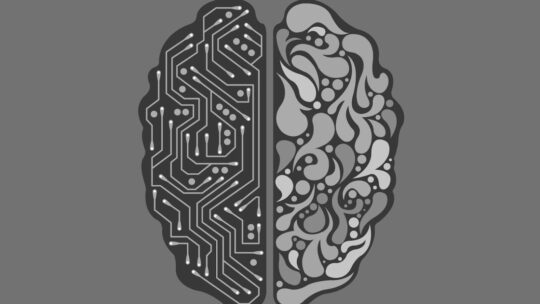
Elon Musk’s vision for Neuralink is to create a brain-computer interface allowing humans to merge with artificial intelligence (AI) and improve cognitive and physical abilities.
The main goal of Neuralink is to develop an implantable device that can communicate with the brain and enable humans to control computers and other devices with their thoughts.
This technology could potentially help people with paralysis or other disabilities to regain mobility and independence.
In addition to medical applications, Musk believes that Neuralink could eventually be used to enhance human intelligence and allow us to keep up with the development of AI.
Musk has stated that he hopes to achieve a symbiotic relationship between humans and AI, where AI complements human abilities rather than replacing them.
With the successful completion of the initial trials, Neuralink’s vision could revolutionize the world of computing and neuroscience.
Neuralink – Introduction
Elon Musk’s Neuralink is a venture that aims to provide a digital layer to the human brain. The idea is to allow humans to connect to the internet and digital devices using a brain-computer interface, enabling us to interact with computers differently.
Neuralink has the potential to revolutionize the way humans interact with machines and could potentially upgrade our cognitive abilities.
This article will explore Elon Musk’s vision for Neuralink and how it could shape the future.
What is Neuralink?
Neuralink is a neurotechnology company founded by Elon Musk in 2016 with the vision of improving human brain function and enabling a direct interface between a computer and a human brain.
Neuralink’s ultimate goal is to develop a device implanted in the human brain, allowing people to directly communicate with their digital devices through their thoughts.
The technology is still in its early stages, but the team at Neuralink is working to create devices that can interpret signals from the brain and transmit them to a computer, as well as the reverse.
This technology could revolutionize how we interact with computers and assist people with neurological disorders.
Neuralink has made significant progress in recent years, and the company continues to innovate and develop new technology to bring Musk’s vision to life.
Purpose of Neuralink
Neuralink is a neurotechnology company founded by Elon Musk that aims to merge human consciousness with Artificial Intelligence (AI) by inventing brain-machine interfaces.
The company’s main vision is to create an ultra-high bandwidth brain-machine interface that allows humans to interact with computers and AI, thus achieving a “symbiosis” between humans and machines. In addition, Neuralink aims to help humans keep pace with the rapid advancement of AI technology by enhancing our cognitive abilities, so that we can compete, collaborate, and hopefully, coexist with intelligent machines.
Elon Musk’s ultimate goal with Neuralink is to make it possible for humans to connect directly with computers, and achieve a “third layer” of intelligence, beyond biological and artificial intelligence. This “third layer” could enable us to process information faster, communicate more effectively, and develop telepathy-like abilities. Once complete, this invention could revolutionize how we interact with machines and create a safer and more efficient way for humans to control advanced technology.

Brief history of Neuralink
Neuralink is a San Francisco-based company founded in 2016 by technology entrepreneur and inventor Elon Musk. The company’s primary focus is developing technology that aims to connect directly between the human brain and computers.
Elon Musk’s vision for Neuralink is to create a platform that enhances human intelligence and provides a pathway for humans to merge with artificial intelligence. In addition, the company is developing ultra-high bandwidth brain-machine interfaces that can potentially help people with neurological disorders and other related problems.
With Neuralink, Elon Musk hopes to create a new level of human-machine integration that will revolutionize how we interact with technology. The history of Neuralink is relatively short, but it is quickly gaining attention from scientists, tech enthusiasts, and investors worldwide. With Musk’s ambitious vision and the team’s cutting-edge technological advancements, it will be fascinating to see how Neuralink shapes the future of AI and human-computer interaction.
Elon Musk’s Vision for Neuralink
Elon Musk’s Vision for Neuralink is one of the most ambitious projects of our time. Neuralink is a brain computer interface allowing humans and computers to interact. The project aims to develop a device that can be implanted into the human brain and used to control computers and other devices.
In this article, we will discuss Elon Musk’s Vision for Neuralink and what it could mean for the future of humanity.
Enhancing Human Capabilities
Elon Musk’s Vision for Neuralink is to enhance human capabilities through the use of advanced brain-machine interfaces. The goal is to develop implantable devices that can help people with severe neurological conditions and eventually allow humans to communicate directly through thoughts with machines and each other.
Neuralink aims to achieve this goal by creating ultra-high bandwidth brain-machine interfaces that can read information from the brain and transmit information back to the brain at a fast rate. The initial focus is developing devices to help people with neurological conditions like Parkinson’s and paralysis. However, Musk has stated that long-term, he hopes people will be able to use this technology to enhance their cognitive abilities and upgrade their brains, much like upgrading computer software.
While the idea of brain-machine interfaces may seem like science fiction, ongoing research and development by Neuralink show that this technology is rapidly advancing and has the potential to transform the way we interact with the world around us.
Pro Tip: Keeping up with the latest advancements in brain-machine interface technology by reading scientific journals and research publications can help you stay informed and potentially benefit from the technology in the future.
Creating a Brain-Machine Interface
Elon Musk’s vision for Neuralink is to create a brain-machine interface that allows humans to interact seamlessly with computers and other devices. The device, which will rely on electrodes implanted in the brain, will pick up signals from millions of neurons, enabling a direct interface with computers, smartphones, and other electronics.
The technology is still in its early stages, but the potential applications are significant. In the short term, it could help people suffering from paralysis or other disabilities to control technology with their thoughts. In the long term, it could lead to fully immersive virtual reality experiences, enhanced cognitive abilities, and even the ability to upload one’s consciousness to the cloud.
Neuralink’s long-term goals are still mostly speculative, and its technology is still in the early stages of development. However, Musk’s vision for the future of human-machine interaction is ambitious and exciting.
Improving Health and Quality of Life
Elon Musk’s vision for Neuralink is to create an advanced brain-computer interface that would greatly improve the health and quality of life for individuals who suffer from various neurological disorders and injuries.
Neuralink’s technology aims to provide a direct connection between the human brain and computers, allowing users to control digital devices with their thoughts and receive sensory feedback from these devices.
Musk believes this technology will revolutionize the treatment of neurological disorders and injuries, including Parkinson’s disease, Alzheimer’s disease, spinal cord injuries, and paralysis. However, it could also have applications outside of healthcare, such as enhancing cognitive abilities and creating new forms of communication.
However, the technology is still in its early stages and faces significant scientific and ethical challenges.
Pro tip: Keep an eye on the developments in this field as it could have a major impact on the future of healthcare and human-machine interaction.

Rajkotupdates.news : elon musk in 2022 neuralink start to implantation of brain chips in humans
Neuralink is a company founded by Elon Musk that is looking to explore the possibility of linking computers with the human brain. At its core, the technology behind Neuralink is based on connecting neurons in the brain with tiny, flexible threads, and using the threads to transmit signals to computers.
In this article, let’s explore some of the technology behind Neuralink, and what Musk’s vision for the future of this technology is.
The Brain-Machine Interface (BMI)
The Brain-Machine Interface (BMI) is a technology that connects the human brain with external devices. Elon Musk’s vision for Neuralink is to create a BMI to enhance human capabilities and revolutionize healthcare.
The technology behind Neuralink involves inserting tiny electrodes into the brain to record and stimulate neural activity. These electrodes are connected to an external device that can communicate and interpret signals with the brain.
This BMI can potentially treat neurological disorders such as Parkinson’s, Alzheimer’s, and depression and enhance cognitive abilities, memory, and learning.
However, ethical concerns surround the use of invasive technology in the brain and the potential for privacy breaches.
As technology advances, it will be crucial to balance the benefits and risks of BMIs and ensure their responsible and ethical use.
The Neuralink Device
The Neuralink device is a brain-computer interface that aims to merge human brains with artificial intelligence. It was developed by Elon Musk and his team at Neuralink to create a symbiotic relationship between humans and AI.
The technology behind Neuralink involves using a series of electrodes implanted into the brain to create a high-bandwidth connection between the human brain and a computer. This connection allows humans to control devices using only their thoughts and receive sensory feedback directly to the brain, revolutionizing how we interact with technology.
Elon Musk’s vision for Neuralink goes beyond improving communication between humans and computers. Instead, he hopes that this technology will help us understand and treat neurological disorders, such as Alzheimer’s and Parkinson’s disease, and even surpass human limitations, such as memory and communication.
While the Neuralink device is still in its early stages of development, it has the potential to transform the way we interact with technology and push the boundaries of what we thought was possible.
The Neuralink Surgery
Elon Musk’s vision for Neuralink is to create a brain-machine interface to help humans keep pace with AI technology. This is where Neuralink surgery comes into play. The technology behind Neuralink is cutting-edge and involves implanting electrodes in the brain, which can read and write signals, thereby creating a seamless interface between the brain and technology.
Here are the key steps involved in Neuralink surgery:
- A small incision is made in the scalp, and a hole is drilled in the skull.
- A thin layer of tissue is removed to expose the brain’s surface.
- Flexible electrodes are then inserted into the brain tissue using a surgical robot.
- The electrodes are then connected to a small computer chip embedded in the skull.
- This chip communicates with an external device such as a smartphone or computer.
Although still in its early stages, Neuralink’s technology could revolutionize how we interact with technology and the world around us. However, more research and development is needed to ensure the safety and efficacy of this technology.
Pro tip: Follow the latest updates on Neuralink surgeries to stay informed about this groundbreaking technology.

Potential Applications of Neuralink
Neuralink, the brain-computer interface technology developed by Elon Musk, has the potential to revolutionize the way humans interact with technology. Neuralink aims to create a device allowing people to connect their brains to computers or other devices.
This article will explore some of the applications of this futuristic technology, and imagine how it could shape our lives.
Medical Applications
Neuralink, Elon Musk’s vision for a brain-computer interface, has a vast range of potential medical applications. These applications could help diagnose, treat, and manage various neurological conditions.
Here are some potential medical applications of Neuralink:
- Restoring mobility to people with paralysis by directly connecting the brain to prosthetic limbs.
- Enhancing memory and cognitive function in people with Alzheimer’s and other degenerative diseases.
- Monitoring and controlling brain activity for people with epilepsy and other seizure disorders.
- Providing a more precise and effective treatment for neurological and psychiatric conditions by targeting specific brain regions.
- Enabling communication for people with severe speech and motor impairments.
The possibilities are endless, and the potential impact of Neuralink in the medical field is enormous.
Military & Defense Applications
Neuralink, a company founded by Elon Musk, is focused on developing brain-machine interfaces that can be implanted in humans. While the technology is still in its early stages, there are numerous potential applications of Neuralink in military and defense.
For example, soldiers could use Neuralink to control drones or other remote-controlled devices with their thoughts, reducing the risk of human error or injury. Additionally, brain implants could be used to treat traumatic brain injuries or PTSD in soldiers and enhance the cognitive abilities of military personnel.
However, there are also ethical considerations, such as the potential for human rights abuses if the technology falls into the wrong hands. As with any new technology, it will be important to carefully consider the potential benefits and risks of Neuralink in military and defense applications.
Entertainment Applications
Neuralink, Elon Musk’s ambitious venture into the world of brain-machine interfaces, can potentially revolutionize the field of entertainment applications in ways that were once thought impossible.
Here are some potential applications of Neuralink for entertainment:
Immersive Virtual Reality: Brain-machine interfaces could create truly immersive virtual reality experiences with unparalleled interaction and realism.
Telepathic Communication: The ability to communicate telepathically could open up new avenues for entertainment, such as virtual concerts where musicians connect with their audience on a deep, emotional level.
Brain-controlled Gaming: Brain-machine interfaces could be used to create a new video game genre controlled purely by the player’s thoughts and emotions.
Mind-bending Experiences: Neuralink could create a wide range of experiences, such as dream-like simulations or personalized ‘trips’ that cater to each individual’s unique neural makeup.
While many of these applications are still in the realm of science fiction, Neuralink has the potential to make them a reality in the not-too-distant future.

Future Prospects of Neuralink
Elon Musk has imagines a bold vision for a future of Neuralink, a device that will directly connect the human brain to a computer.
Neuralink promises a potential breakthrough in artificial intelligence and could have far-reaching applications for the medical, military and consumer sectors.
In this article, we will evaluate the potential prospects of Neuralink.
Possible Advancements
Neuralink, a company established by Elon Musk, has opened up many possibilities for the future of technology. The advancements possible with Neuralink can change the world as we know it.
Elon Musk’s vision for Neuralink is directly connecting human brains to technology. The company is developing a chip that can be implanted in the human brain, allowing people to control computers, smartphones, and other digital devices without any physical interaction.
The potential applications for this technology could range from restoring movement to paralyzed individuals to enabling telepathic communication between humans.
The prospects of Neuralink are truly exciting. The possibilities of this technology are endless, and it has the potential to revolutionize the way we interact with the world around us. While the technology is still in its early stages, there is no limit to its future potential.
Pro Tip: Watch Neuralink for exciting developments and prepare for a technological revolution.
Challenges and Risks
Several challenges and risks are associated with the prospects of Neuralink, which is Elon Musk’s vision for developing an implantable brain-computer interface technology.
One of the major challenges in developing an implantable technology is ensuring the devices are reliable, long-lasting, and able to interface with the human brain without causing damage or unintended side effects.
Additionally, there are ethical and privacy concerns related to collecting and using personal brain data. There is also the risk that such technology could be used nefarious ways, such as mind control or surveillance.
Despite these challenges and risks, the potential benefits of Neuralink’s brain-computer interface technology in enhancing human cognition and quality of life are vast. The company has already made significant progress in developing the technology.
Pro Tip: While Elon Musk’s vision for Neuralink is ambitious, it will require extensive research and testing before it can be safely and effectively used in humans.
Ethical Considerations
As Elon Musk’s Neuralink continues to make strides in brain-machine interface technology, it is important to consider the ethical implications of such advancements.
Some potential ethical concerns that arise include:
- Informed Consent: How will patients receive enough information to fully understand the risks and benefits of such a complex medical procedure?
- Privacy: What will happen to the extensive data collected from these brain-machine interfaces, and who will have access to it?
- Equality: Will this technology be accessible to people across all socioeconomic and demographic groups, or will it be limited to the wealthy and elite?
Moreover, as Neuralink’s vision evolves, ethical considerations must be at the forefront of the discussion to ensure these advancements are made responsibly and humanely.























